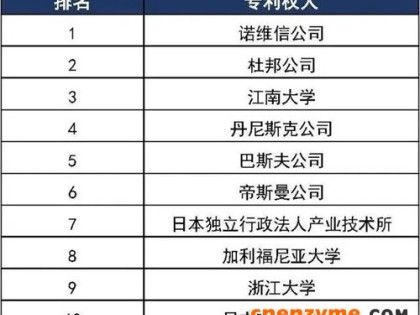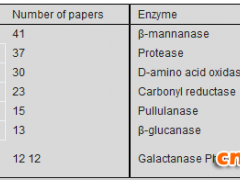ETA POSITION PAPER
Beta-amylase from ungerminated barley
The Enzyme Technical Association ("ETA") Board has reviewed the historical use, scientific data, functionality, and intended purposes of Beta-amylase from ungerminated barley and concluded that the enzyme is generally recognized as safe ("GRAS") within the meaning of the U.S. Federal Food, Drug, and Cosmetic Act and its implementing regulations. The following is a discussion of ETA's rationale and support for the GRAS determination.
For the purpose of understanding ETA's determination of Beta-amylase from ungerminated barley as GRAS, one needs to consider the regulation of food ingredients by the U.S. Food and Drug Administration ("FDA"). The regulation of food ingredients in the United States is accomplished by the application of laws and regulations, primarily those administered by the FDA and the U.S. Department of Agriculture. FDA regulates food ingredients through two basic statutory mechanisms, the recognition that the food substance is generally recognized as safe, based on past use or scientific data, or the review of data by FDA to support a food additive regulation.
A GRAS ingredient is a substance that is generally recognized, among experts qualified by scientific training and experience to evaluate its safety, as having been adequately shown through scientific procedures (or, in the case of a substance used in food prior to January1, 1958, through scientific procedures or experience based on common use in food) to be safe under the conditions of its intended use. See 21U.S.C. ?nbsp;321(s).
A food additive is regulated through a premarket approval process that is set out in the statute and the regulations. 21 U.S.C. ?321(s). A food additive is any substance the intended use of which results in it affecting the characteristics of any food or becoming, directly or indirectly, a component of food. While GRAS substances fit this definition, because they are generally recognized as safe, they are not regulated as food additives.
Because the GRAS status of a substance is based on general recognition of safety, there is no statutory requirement for FDA to evaluate the GRAS status of a food substance. Therefore, anyone, including a manufacturer can self-affirm the GRAS status of a particular food substance and sell the food substance without consulting the FDA. Most commonly used food ingredients, including some enzymes, are considered GRAS and are not specifically regulated by the FDA.
For those who seek confirmation of the GRAS status of a substance, FDA has, by regulation, created a procedure to confirm the GRAS status of a substance. The GRAS review by FDA, leading to the publication of a regulation, has become a long and somewhat complicated procedure. For example, the GRAS affirmation petition for a number of enzymes, GRAS Petition 3G0016, known as GRASP 16, has been pending at FDA for over 20 years, yet the manufacturers of these enzymes market these enzymes freely and extensively.
The ETA Board of Directors considers Beta amylase from ungerminated barley to be GRAS, as explained below.
is a 1,4-alpha-D-glucan maltohydrolase (I.U.B. 3.2.1.2) and is present in ungerminated and germinated (malted) barley. According to Briggs (1), Beta-amylase occurs as several isozymes which are immunologically identical. Grabar and Daussant (2) report that the Beta-amylase in ungerminated barley is less soluble in water and migrates more rapidly at pH 8.2 than that of malted barley, but that the two are antigenically identical. The Beta-amylase in malted barley is documented sufficiently to meet FDA's criteria for a GRAS regulation and the agency is planning to affirm it as GRAS in a final regulation. Beta-amylase is a 1,4-alpha-D-glucan maltohydrolase (I.U.B. 3.2.1.2) and is present in ungerminated and germinated (malted) barley. According to Briggs (1), Beta-amylase occurs as several isozymes which are immunologically identical. Grabar and Daussant (2) report that the Beta-amylase in ungerminated barley is less soluble in water and migrates more rapidly at pH 8.2 than that of malted barley, but that the two are antigenically identical. The Beta-amylase in malted barley is documented sufficiently to meet FDA's criteria for a GRAS regulation and the agency is planning to affirm it as GRAS in a final regulation.
Beta-amylase
Barley has been cultivated for centuries prior to the Christian era and was probably the most important grain of the Greeks and Romans. Barley has also been a staple food in Scandinavian countries until the beginning of this century, and is still the main cereal cultivated in hot and dry areas. As a food for human consumption, barley has been utilized in the form of pot and pearl barley, barley grits and barley flour. The main application of barley flour is in the baking of flat bread. There is also literature dating back to the last century (See 3, 4, 5, 6 and 7) which reports the presence of enzymes, including Beta-amylase, in cereals and their mode of action during bread making.
"Barley is one of the prehistoric cereal grains used for food, feed and fermented beverages" (8). Common use in food includes soups, dressings, baby food, and food specialties (9). Its use is mentioned in the Bible and in the New Testament account of the miracle of the barley loaves and fishes (10). Ungerminated barley has been added as a cereal adjunct in brewing for centuries (11). When barley is consumed, the Beta-amylase is consumed. Thus, it has been consumed safely for millennia. This, along with its being an isozyme of Beta-amylase from malted barley to which it is immunologically identical, is convincing evidence of the general recognition of safety for Beta-amylase from ungerminated barley.
The preparation of this position paper results from ETA's determination that it should withdraw the Beta-amylase from ungerminated barley from an FDA GRAS petition. The Beta-amylases from ungerminated and malted barley were the subject of GRASP 16 filed by ETA (formerly the Ad Hoc Enzyme Technical Committee) in April of 1973. The Beta-amylase is used for conversion of liquefied starch into solutions of sugar rich in maltose. The Association has been working with the FDA since 1973 towards the promulgation of a final regulation affirming the enzymes in GRASP 16 as GRAS.
The basis of ETA's GRAS submission is that these enzymes were in commerce and considered safe for food use prior to 1958 when the Food Additive Amendments to the Federal Food, Drug and Cosmetic Act were enacted. Over the twenty years that the petition has been under review, FDA has refined the criteria in their considerations of what documentation is needed for a final GRAS regulation for these enzymes. The criteria, which they are applying to GRASP 16, are that there needs to be published, peer-reviewed papers documenting the safe use of the enzymes, and any other products, prior to 1958. Because the enzyme industry considered as proprietary the information about enzyme sources during the time frame in question (i.e., prior to 1958), it is impossible to find sufficient public documentation for these enzymes. This is the situation for Beta-amylase from unmalted barley. Because the Association members and the FDA have not been able to find the publications necessary to document to the agency's satisfaction the use of this enzyme, ETA has withdrawn the source of the enzyme from the petition so as not to delay FDA affirmation of other enzymes which the agency feels it can affirm as GRAS in a final regulation. The withdrawal by ETA of the source does not mean that Beta-amylase from ungerminated barley is not generally recognized as safe, but only that the agency's current affirmation criteria for documentation for an official regulation cannot be met. Beta-amylase from ungerminated barley, as noted above, is GRAS.
If you should have any questions on the above or the GRAS assessment of this enzyme, please contact the Enzyme Technical Association at the address on the home page of this web site.
REFERENCES
1. Dennis E. Briggs, Barley (Chapman & Hall, London 1978).
2. P. Grabar and J. Daussant, "Study of Barley and Malt Amylases by Immunochemical Methods," in 41 Cereal Chemistry 528-32 (1964).
3. Enzymes and Their Role in Wheat Technology, (John A. Anderson ed., Interscience Publishers, New York 1946).
4. W.F. Geddes "Technology of Cereal Grains," in The Chemistry and Technology of Food and Food Products 2018-21 (Morris B. Jacobs ed., Interscience Publishers, New York 2d ed. 1951).
5. Norman L. Kent, "Barley: Processing Nutritional Attributes, Technological Uses," in Technology of Cereals with Special Reference to Wheat 226 (Pergamon Press, New York 1975).
6. Food Enzymes, First Series of Symposia on Foods (Harold W. Schultz ed., Oregon State College 1959).
7. Milton E. Parker et al., "Refined Food Processing," in 1 Element of Food Engineering 150 (Reinhold Publishing, New York 1952).
8. The Chemistry and Technology of Food and Food Products (Morris B. Jacobs, ed., Interscience Publishers, New York 2d ed. 1951).
9. Handbook of Food and Agriculture (Frederick C. Blanck ed., Reinhold Publishing, New York 1955).
10. The New Testament, John 6:9, 13.
11. The Practical Brewer -- A Manual of the Brewing Industry (Harold M. Broderick, ed., Impressions, Inc., Madison, Wisconsin 2d ed. 1977).





